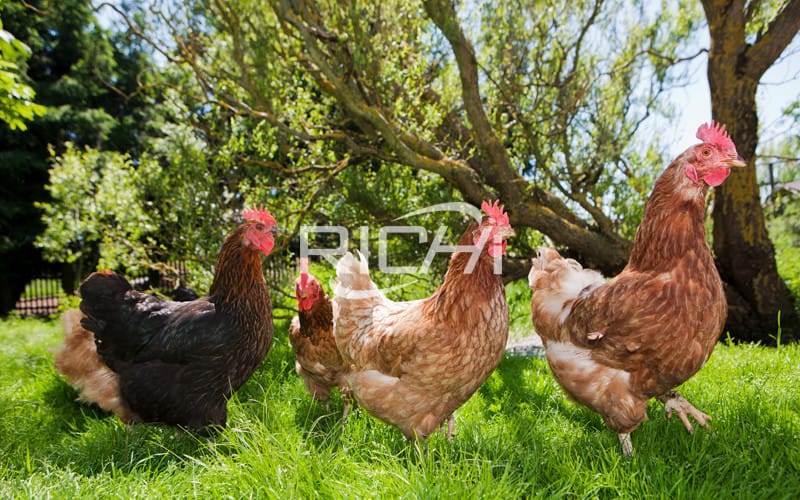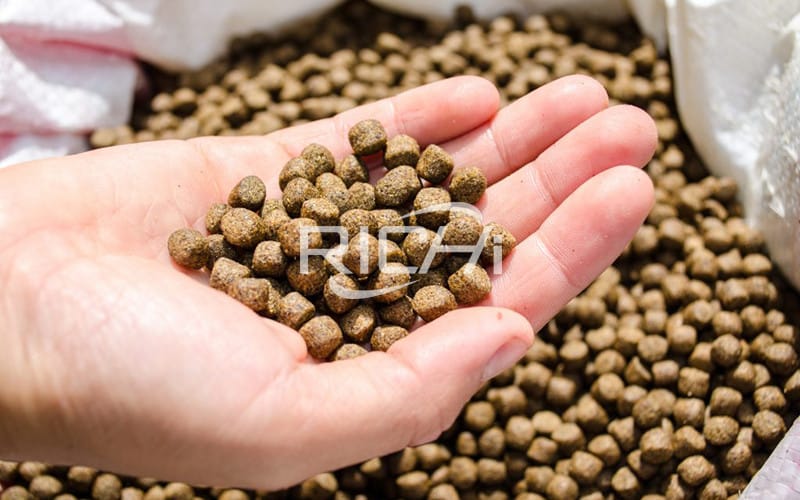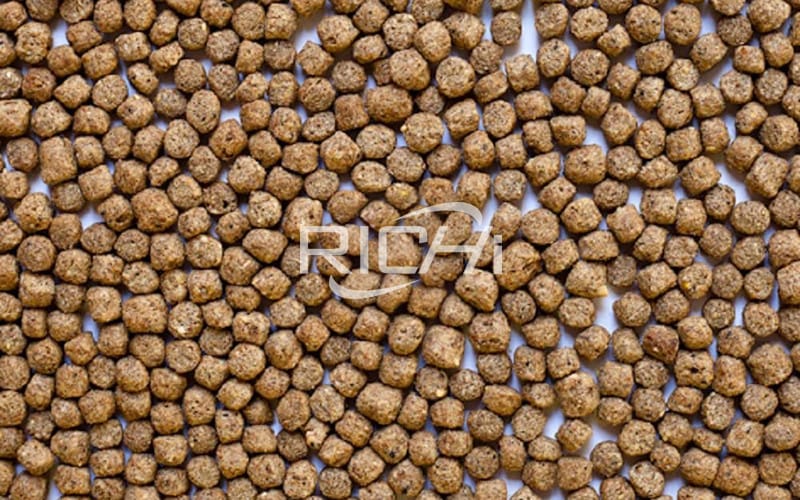Laying hen feed formula should be adjusted in hot season
There are many factors that affect the production performance of chickens, such as hardware facilities and equipment, feeding and management levels, feed nutrition, diseases, etc. Under standard feeding and management conditions, the production performance of flocks can be steadily exerted. However, when entering the high temperature season in summer, the production performance of flocks will be significantly reduced under the influence of heat stress, which will bring different degrees of economic losses to farmers.
So, how to alleviate the negative effects of summer heat stress through effective nutrition control measures? Based on 26 years of formula practice, Richi Technical Service Center has concluded a set of mature high-temperature season laying hen feed formula adjustment scheme to achieve the overall anti-heat stress function of the feed. How to adjust the feed formula of laying hens in high temperature season? Richi reminds customers of the breeding industry to pay attention to the following points:

1. The core of adjusting the laying hens feed formula in summer
Insufficient nutrient intake due to a decrease in feed intake due to increased temperature in summer is the main reason for the decline in production performance of the flock. We can change the nutrient concentration of the diet in advance by predicting the impact of the increase in ambient temperature on feed intake.
2. Principles for adjusting the feed formula of laying hens in summer
We will base on the nutrition requirements of different breeds and stages, and the actual or estimated feed intake level of the flock as the basis for regulation.
3. The direction of summer laying hen feed formula adjustment
The adjustment of feed formula for laying hens in summer is mainly macro nutrition, micro nutrition and functional substances. Among them, the major nutrients focus on energy, protein, amino acids, and minerals; micronutrients are mainly vitamins and trace elements; and functional substances are mainly achieved through the adjustment of microecology, enzyme preparations, acidulants, and anti-stress substances. Ruiqi reminds breeding enterprises that the adjustment of summer laying hen feed formula should include the following aspects:
(1) Energy adjustment

Under high temperature stress, it is generally recommended to add 1-2% fat to the diet. The level of adjustment is not absolute, and should be adjusted according to the nutritional needs of the breed, the feed intake of the flock, and egg production performance. Take Hailan brown as an example, the normal feed intake at 30 weeks of age is 108g. If the feed intake decreases to below 95g with increasing temperature, in this case, the amount of fat added in the formula can reach more than 2%.
However, when the temperature is higher than 36℃, the addition of fat may be counterproductive, because when the temperature is too high, the addition of fat can quickly raise the temperature of the chicken body and exacerbate heat stress. Effective temperature control management measures are the key.
(2) Adjustment of protein
The protein raw materials contacted at the farming site are mainly soybean meal, cotton meal, peanut meal, etc. The protein raw materials are ultimately degraded into amino acids through digestion, and participate in the body's digestion and absorption, metabolism and tissue formation in the form of amino acids, so the nutritional essence of protein is Amino acid nutrition.
In the case of high temperature, diets with high protein levels will increase kidney burden and increase body heat; the imbalance of amino acids in the protein in the feed will also cause excess amino acid metabolism and heat production, resulting in increased heat stress.
Therefore, under heat stress conditions, in order to ensure sufficient protein intake without adding additional heat to increase consumption, the correct approach is: the protein level is generally unchanged, the level of essential amino acids is increased; by adding artificial methionine, Lysine to increase the level of digestible amino acids.
In the use of protein raw materials, it is recommended to purchase high-quality soybean meal with a crude protein level of 46% in summer. When using a premix containing animal protein raw materials, it is considered that the high temperature and humidity environment can easily cause feed spoilage and breed harmful microorganisms. Therefore, the choice of feed manufacturers and the storage conditions of feed should be highly valued.
(3) Adjustment of constant minerals
As feed intake decreases, calcium and phosphorus intake will also decrease. In order to solve the problem of potential calcium and phosphorus deficiency, in addition to increasing the addition ratio of premix, a large layer of stone powder can also be sprinkled on the surface of the feed in the trough to make up.
(4) Adjustment of trace minerals
Increased drinking water in summer will lead to increased excretion of minerals in feces. Therefore, the amount of micro-minerals should be increased according to the reduction of dietary intake. In summer, the frequency of open mouth gasping of chickens increases and carbon dioxide is continuously exhaled (decreasing carbonate in eggshell glands), resulting in poor eggshell quality. Add 0.1-0.3% baking soda or 0.15-0.3% potassium chloride and ammonium chloride. It is helpful to improve the thickness of the eggshell; considering the balance of the electrolyte, it is necessary to appropriately reduce the amount of salt.
(5) Vitamin adjustment
Vitamins are thermally unstable, and the replenishment of vitamins in feeds should exceed 10% or even 40%. On the one hand, they offset the effect of reduced feed intake, and on the other hand, they make up for the loss of vitamin potency in high-temperature environments. Vitamin C can play a good role in alleviating heat stress. When the temperature exceeds 28 ℃, the self-synthesis ability of vitamin C is reduced. Supplementing 200-300g/ton of vitamin C in the feed can maintain stable egg production rate.
(6) Add functional anti-stress products
Inhibit the colonization of pathogenic microorganisms in the body and maintain the health of the digestive tract; maintain the normal function of the immune system and improve disease resistance; maintain the integrity of the intestinal mucosa and promote the proliferation of intestinal cells; remove free radicals in the body and improve the anti-stress ability; Promote the secretion of digestive juice; strengthen tubal and ovarian function, improve egg quality.

4. Summer formula recommendations for layer feed:
(1) Feed formula for layer chicks
a. Corn 62%, wheat bran 3.2%, soybean meal 31%, calcium hydrogen phosphate 1.3%, stone powder 1.2%, table salt 0.3%, and additives 1%.
b. Maize 61.7%, wheat bran 4.5%, soybean meal 24%, fish meal 2%, vegetable meal 4%, calcium hydrogen phosphate 1.3%, stone powder 1.2%, table salt 0.3%, additives 1%.
c. Corn 62.7%, wheat bran 4%, soybean meal 25%, fish meal 1.5%, vegetable meal 3%, calcium hydrogen phosphate 1.3%, stone powder 1.2%, table salt 0.3%, additives 1%.
(2) Feed formula for rearing chicken
a. Corn 61.4%, wheat bran 14%, soybean meal 21%, calcium hydrogen phosphate 1.2%, stone powder 1.1%, table salt 0.3%, and additives 1%.
b. Corn 60.4%, wheat bran 14%, soybean meal 17%, fish meal 1%, vegetable meal 4%, calcium hydrogen phosphate 1.2%, stone powder 1.1%, table salt 0.3%, additives 1%.
c. Corn 61.9%, wheat bran 12%, soybean meal 15.5%, fish meal 1%, vegetable meal 4%, cotton meal 2%, calcium hydrogen phosphate 1.2%, stone powder 1.1%, table salt 0.3%, additives 1%.
(3) Feed formula for laying hens
a. Corn 58.4%, wheat bran 3%, soybean meal 28%, calcium hydrogen phosphate 1.3%, stone powder 8%, table salt 0.3%, and additives 1%.
b. Corn 57.9%, wheat bran 4%, soybean meal 21.5%, fish meal 2%, vegetable meal 4%, calcium hydrogen phosphate 1.3%, stone powder 8%, table salt 0.3%, additives 1%.
c. Corn 57.4%, wheat bran 3%, soybean meal 20%, fish meal 2%, vegetable meal 4%, cotton meal 3%, dicalcium phosphate 1.3%, stone powder 8%, table salt 0.3%, additives 1%.
Expand information:
1. How to process feed pellets for laying hens
2. How to build a layer hen feed production plant
If you want to built one complete pellet production line in your country, pls send the inquiry to us. We will customized design according to your requirement.



